It is easy for very talented artists to fall out of the public consciousness over time. Unless there is a resurgence of interest, seriously good artists disappear under the radar. Although ‘good’ art should never be out of fashion and gifted artists should never drop out of sight, this happens all the time. Berthe Morisot was an extremely talented founder of the Impressionist movement and was part of all of the group’s exhibitions, but she is not widely known today outside the art world, whereas the other impressionists – usually male and sometimes less talented – have their work on tea towels and coffee cups all around the world.
In 2016, the Williamson Art Gallery in Birkenhead held an exhibition to mark the centenary of the death of the artist, James Hamilton Hay, who was born in the town and died in nearby Heswall. James is one of those artists who, despite his huge talent, is largely forgotten. The Williamson Art Gallery has the largest public collection of James’s work anywhere, although there is a substantial number of his works spread around his family members. I gave a talk at the Williamson to accompany the exhibition, and it became apparent just how little-known James and his work were. I made a decision to find out more about him – and ended up writing his biography.
James Hamilton Hay was born on 6th December 1874 at 98 Bridge Street, Birkenhead, the second of four children. His father was James Murdoch Hay from Coldstream in the Scottish Borders, and his mother was the gloriously named Annie Wilhelmina Hamilton Lothian Hogg. Early in their marriage, James’s parents lived with his elder brother - and business partner – William, at the house in Bridge Street, where James was born, moving to 8 Carlton Terrace, Meols, Wirral, as their family grew. James’s father was an architect in the family firm, W & J Hay, which had started in Scotland but, by 1847, James [Snr] and his elder brother, William, were based in Liverpool, helping with the volume of business in Merseyside and Cumbria. James joined the family business for a short time – some reports say this was for around three years but, in conversation with the Curator of the Walker Art Gallery, he is reported to have said that it was only for a few months - and then went off to study art, initially at Birkenhead School of Art and later at Liverpool University’s School of Art under Augustus John. In the 1890s, James travelled to St Ives to study under Julius Olsson. According to Tovey’s Social History of St Ives, James always said that his student time spent with Julius Olsson at St Ives was the most valuable of his lessons.
In a letter from his family to Edward Morris at the Walker Art Gallery in October 1977, it became clear that James was christened ‘James Hay’ with ‘Hamilton’ added later. This is confirmed by entries on Census documents. ‘Hamilton’ was one of his mother’s many first names.
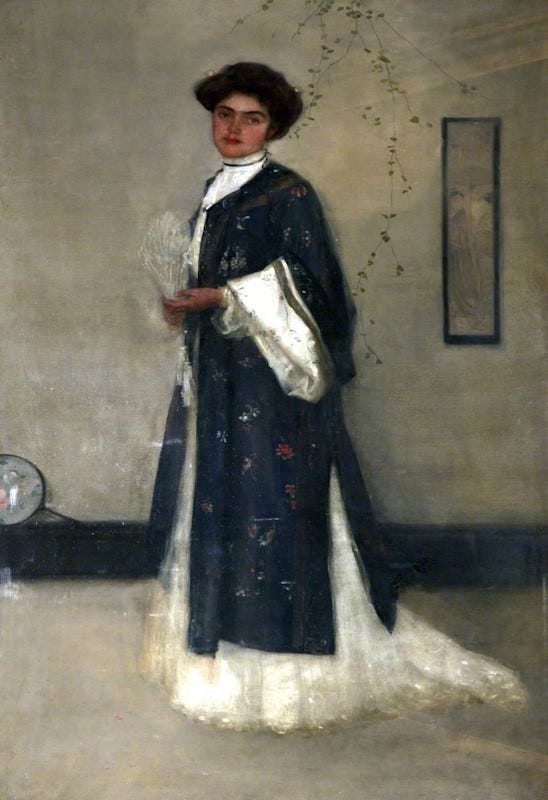
James was a member of several local art groups and would later work with various societies in London. One such group, The Liver Sketching Club, held annual exhibitions of work by members. The 1898 exhibition was held at the club’s studios at Cuthbert’s Building, Clayton Square, Liverpool, and included six works by James. The exhibition catalogue, held in the Liverpool Archives in the Central Library, shows James’s address as 92 Bridge Street, Birkenhead, which, if correct, suggests that at the age of 24, he was living a few doors away from the house at number 98 where he was born.
In 1900, James exhibited two works at the Royal Academy – Moonrise, Conway Valley and Dock Buildings, Liverpool. The former is featured in the book, Artists in the Conwy Valley by Tony Ellis. By 1904, James was also a member of the Liverpool Academy and, in that year, being the consummate organiser, he curated The Independent Exhibition at The Studio, 10 South Castle Street, Liverpool, which included work by Hornel, Whistler, Francis Dodd, Augustus John and, apparently, Manet. However, the Bluecoat’s archives for the Sandon Studios Society identifies the artist as Monet. James insisted that the exhibition included only “… serious painting independent of all clap-trap of topographical, historical or anecdotal interest”.
By 1906, James’s work was being exhibited widely. He showed with the Royal Scottish Academy, Liverpool Royal Institution, Allied Artists and many others. James painted a splendid portrait of Enid Rutherford in 1905, shown here [National Museums Liverpool]. It was first exhibited in that year and now hangs above one of the staircases in Liverpool’s Walker Art Gallery. James married Enid in 1907. After their marriage, he and his wife moved to Taintree House, Heathfield Road, Audlem, near Nantwich. While he lived in Audlem, he painted at least three landscapes including one entitled The Vale of Audlem.
In 1907, Adam & Charles Black published Liverpool with 168 pages of text by Dixon Scott and 25 illustrations of James’s watercolours of the city and of nearby Wirral.
James’s wife, Enid, was also an accomplished artist. Her painting titled Evening Landscape with Church on a Hill is part of the Government Art Collection. In Parliament on 6th October 2008, David Miliband, then Secretary of State for Foreign and Commonwealth Affairs, was asked what works from the Government Art Collection were located in his ministerial residence in 1, Carlton Gardens. Mr Miliband listed the works and it included this painting by Enid. David Miliband is now based in New York and is President of the charity, International Rescue. I wondered whether Enid’s painting was in the premises when he was appointed, or did he choose to have it in his home – and, if so, why? So, I asked him – by email. It must have been a quiet day in International Rescue because I received a reply almost immediately which said, “David. I marvel at your research capacity … but I am afraid that although it is the official ministerial residence, we didn't actually live at 1 Carlton Gardens so I am not able to help. Very sorry. David Miliband”. So, presumably, it was a predecessor who chose to have Enid’s painting on their walls but, rather than begin stalking any more past Foreign Secretaries, I decided not to continue with that line of enquiry.
James’s most important involvement in Liverpool was with the Sandon Studios Society. He had been a member of the Sandon Society of Arts – the predecessor to the Sandon Studios Society, founded in 1903, with a membership which included Charles Rennie Mackintosh, Augustus John, John Lavery, Mary McCrossan, David Muirhead, Philip Wilson Steer and Enid, although, as was the custom of the time, she is sometimes referred to as Mrs Hamilton Hay. The Sandon Studios Society was a remarkable group which punched well above its weight. Although the Sandon Studios Society included many excellent artists, it is possibly best remembered for the exceptional exhibition it organised in 1911.
In 1911, Liverpool saw mass social unrest and strikes to the point where British troops were on the streets of the city and a warship was stationed in the River Mersey. It is sometimes thought that this was the nearest that the UK has come to revolution. As all of this was taking place, The Sandon organised what has been called the most important exhibition in Liverpool during the 20th century. In 2011, the Walker Art Gallery marked the centenary of the event by re-creating the exhibition. At the time, Xanthe Brooke from the Walker wrote, “The works by the European Post-Impressionists represent a momentous shift the Western art world, which served to encourage radical British artists like those of the Sandon Studios Society to champion their work and try to emulate it. The inimitable style of Gauguin continues to fascinate audiences today but in the early 20th century, it was a brave and startling sight. The Sandon Studios Society showed considerable foresight in bringing his work and others like him to wider public attention”.
James was on the committee, alongside Ethel Martin Frimston and others, which organised the 1911 exhibition at the Bluecoat which, as well as work by society members, included many post-impressionist paintings. In his book about the Society, Roderick Bisson tells us that there were forty-six works of the French School, including eight paintings by Gauguin, three by Matisse, five by Picasso, two by van Gogh and a Cezanne – and many others. Apart from Roger Fry’s Post-Impressionist Exhibition in London a year earlier, this was the first exhibition of work by these ‘modern’ artists in the UK – and it was at the Bluecoat in Liverpool! It even preceded the famous Armory Show in New York in 1913, which introduced these artists to the USA. Author David Bingham said of the exhibition, “In March 1911, the Sandon Studios Society at the Bluecoat buildings hosted what can probably be considered the most ground-breaking art exhibition held in the city in the 20th Century: an exhibition so far ahead of its time and so unusual that in some ways it occupied a place almost beyond expectations or perceptions.” - and James Hamilton Hay was instrumental in organising the event. In the biography of artist, Albert Lipczinsky, Paul O’Keefe describes the exhibition as having 135 artworks, including 47 from the London exhibition. He lists the ‘French’ artists as including Picasso, Gauguin, Matisse, Derain, van Gogh, and de Vlaminck, and the ‘local’ ones such as James Hamilton Hay, George Harris, Edward Carter Preston, Gerard Chowne, Augustus John and others. James was well-represented with eight works in the exhibition, while Enid had three.
1911 was a traumatic year for James. Sadly, after only four years of marriage, Enid died on 13th June 1911 at Taintree House, Audlem. Contemporary accounts suggest that ‘James barely survived his grief and destroyed many of his – and his wife’s – paintings in a fit of despair.”
In 1912, James moved to London and settled near Trafalgar Square, Chelsea – now called Chelsea Square. He and Enid had worked and exhibited with the Camden Town Group before, but around 1913 and 1914, he became more involved.
In 1913, James sat for a drypoint portrait by Francis Dodd, an event which kindled his interest in this method. The portrait is shown at the start of this article. He produced 3 etchings and 50 drypoints during his lifetime, the final one being a portrait of his sister, Maria [shown here], just before he died, when illness had confined him to his home in Heswall. Many consider him to be one of the great masters of drypoint.
The London Group was founded in 1913, when the Camden Town Group came together with the English Vorticists and other independent artists to challenge the domination of the Royal Academy of Arts, which had become unadventurous and conservative. There were 32 founder members, including Harold Gilman, who was the organisation’s first President, Wyndham Lewis, Lucien Pissarro, and Walter Sickert. James was elected to membership of the London Group in 1914, the year after it was founded - along with Paul Nash and William Roberts. His membership of the group was not without its initial problems. According to David Redfern’s ‘The London Group: A History’, the group held its first membership elections on 6th December, 1913. Fourteen candidates, including James, were put up for election but an overcomplicated voting system failed to elect any of them. However, he was one of nine new members elected in late 1914.
He travelled extensively around the UK and documented these trips with drypoints and paintings. James visited and made several drypoints in Walberswick and Southwold, and also stayed at Langdale in Cumbria in August 1914, where he produced prints of the Langdale Pikes.
In 1914, his work was part of The British Council’s exhibition in the British Pavilion at the Venice Biennale.
James Hamilton Hay died on 7th October 1916 at the family home in Heswall, Wirral, aged just 41. Art UK says, “Hay is one of two of the most talented artists to emerge from Liverpool in the early twentieth century”. Memorial exhibitions were held at the Goupil Gallery and elsewhere, and his work was included in that year’s exhibition by The London Group with the comment ‘recently deceased’.
Research for my biography took me to Kendal in the Lake District. James’s brother, John, had moved to the area when he retired and several of the family now live there and own some of his works as well as equipment which belonged to James and, of great importance, his exceptional sketchbooks. The Williamson Art Gallery has the largest public collection of his paintings but, during my research for the biography, I identified very many more in the collections of family members.

So we have James Hamilton Hay, an artist of considerable talent, associated with the Sandon Studios Society, The Liver Sketching Club, The Liverpool Academy, The Camden Town Group, The London Group and others, who organised the most important exhibition held in Liverpool in the 20th century, whose work is in major galleries in the UK and abroad, who represented Britain in the Venice Biennale, who is recognised as one of the masters of drypoint etching, who is considered one of the two greatest painters ever to come from Liverpool, and much more – and still most people have never heard of him while many far lesser artists are household names.
This article is extracted from my book ‘James Hamilton Hay, His Life, His Works, and the People Around Him’.

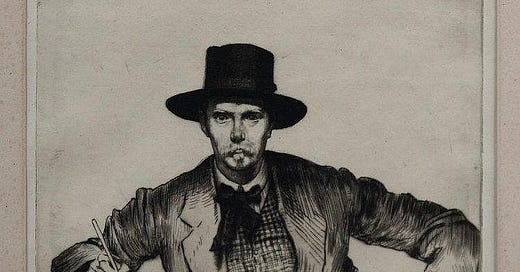



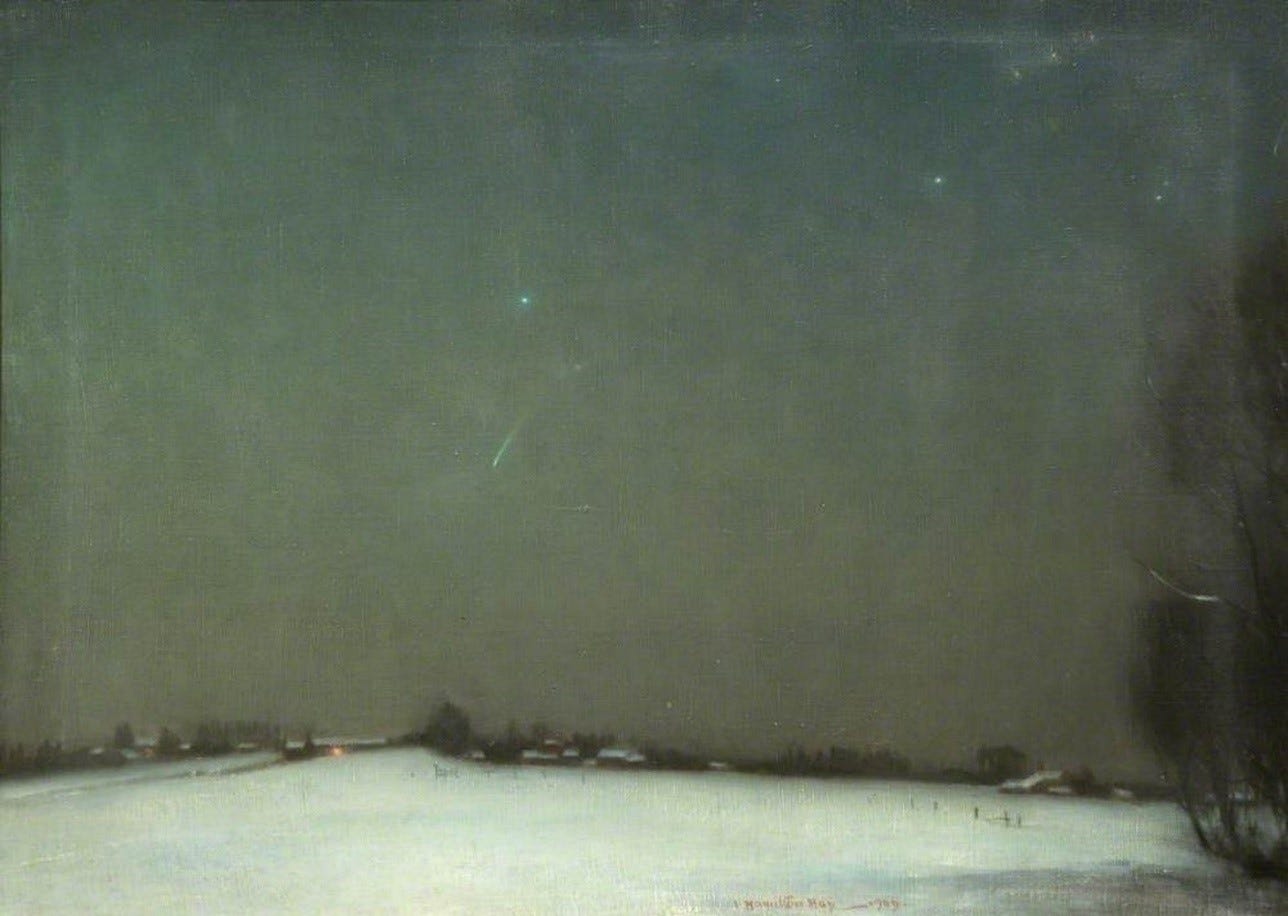

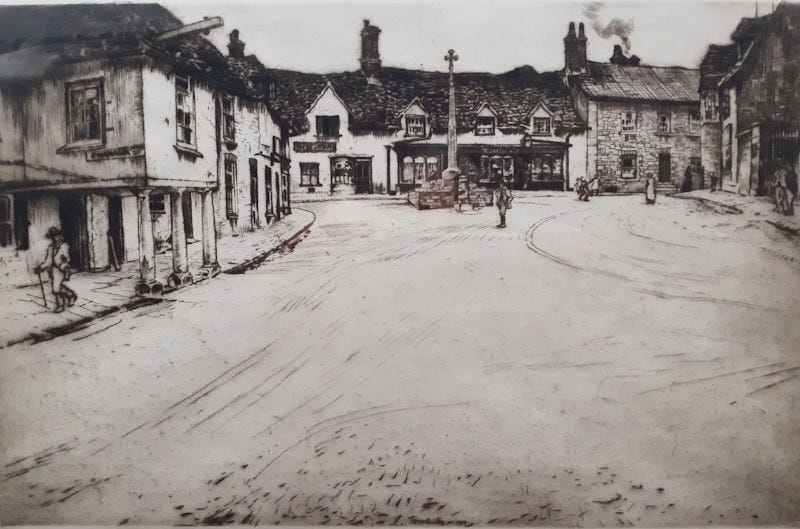
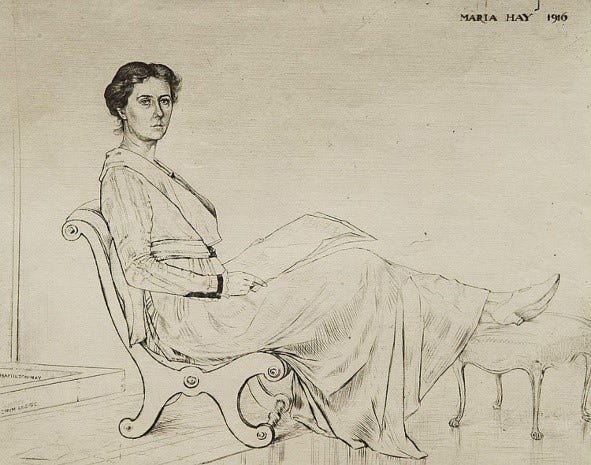
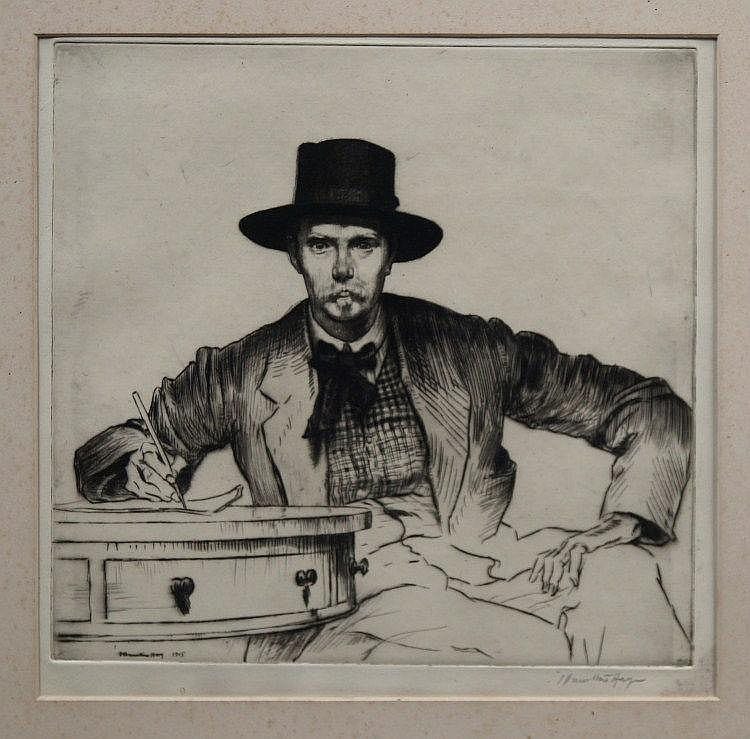
Although I wrote this article, I didn't read it out. 'AI' listened to my voice and recreated it for the audio version. Even allowing for a couple of mispronunciations - 'Meols' and 'Sandon' - it's quite impressive and a little disconcerting.